预计到 2031 年,激光加工市场规模将从 2024 年的 112.6 亿美元增至 64.6 亿美元。预计该市场在 2025 年至 2031 年期间的复合年增长率为 8.4%。为推动激光加工发展而不断增加的研发活动可能会在未来几年为市场带来新的趋势。
激光加工市场分析
汽车、航空航天和医疗行业的扩张、激光技术在制造业中的日益普及以及各行各业对可持续运营的日益关注,是推动全球激光加工需求的主要因素。对高性能解决方案日益增长的需求以及对激光技术应用的投资不断增加,正在推动激光加工市场的增长。预计在预测期内,技术进步以及人工智能 (AI) 和机器学习 (ML) 等先进技术在激光加工中的融合将在市场中创造丰厚的商机。此外,推动激光加工发展的研发活动不断增多,人们对使用可持续解决方案益处的认识日益加深,以及超快脉冲激光技术的不断发展,预计将为市场带来未来的增长机会。
激光加工市场概览
激光加工是一种非接触式、无磨损的制造技术,它使用聚焦激光束以极高的精度和效率对材料进行切割、打标、焊接、钻孔或更换。激光加工技术利用集中的光能以非接触式方式与材料相互作用,从而减少设备的物理磨损和应变。激光加工提供的适应性和灵活性使其在航空航天、汽车、电子、医疗设备以及艺术品和珠宝等各行各业的应用日益广泛。激光加工的主要应用是微加工,这需要在微型部件上形成精确的特征和图案。此外,企业广泛采用激光加工技术,以便在大规模生产过程中轻松操作自动化和计算机数控 (CNC) 系统。激光加工具有显著的优势,包括高精度、高可靠性和高速度,使各行各业无需昂贵的工具或精加工即可生产出复杂的几何形状。
自定义此报告以满足您的要求
您将免费获得任何报告的定制,包括本报告的部分内容,或国家级分析、Excel 数据包,以及为初创企业和大学提供超值优惠和折扣
激光加工市场: 战略洞察
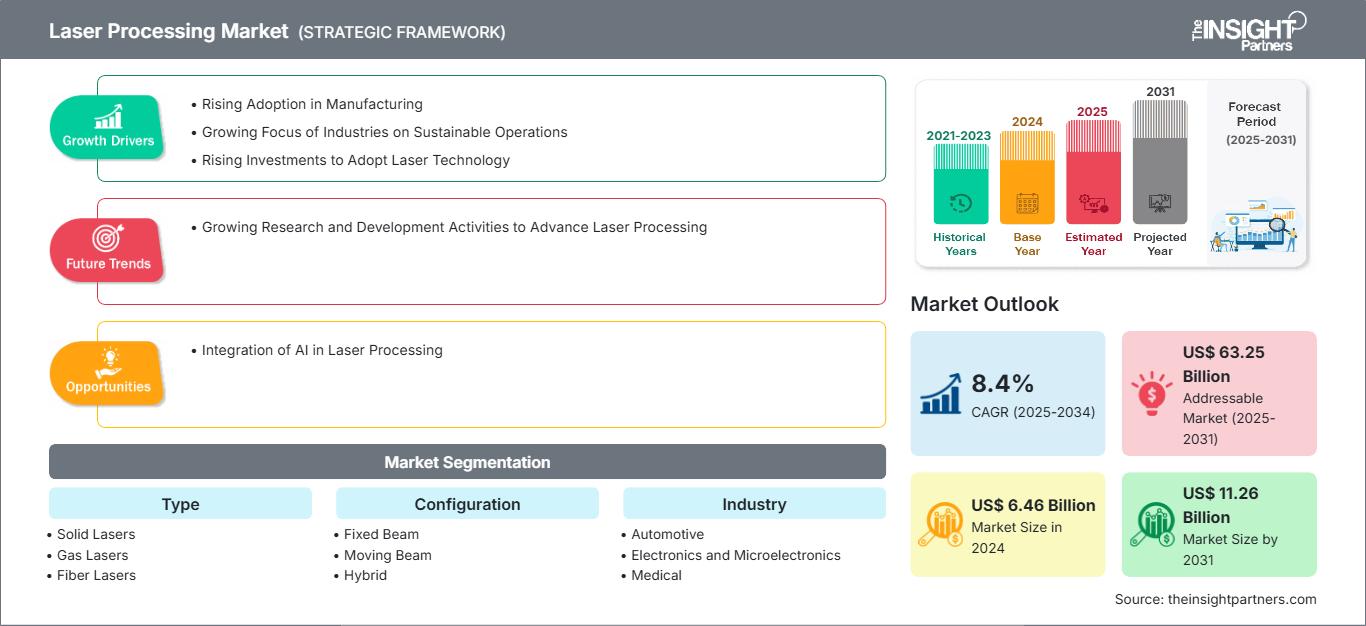
-
获取本报告的主要市场趋势。这个免费样本将包括数据分析,从市场趋势到估计和预测。
激光加工市场驱动因素与机遇
各行各业日益重视可持续运营
根据 Optica 和 Optica Foundation 于 2024 年 5 月发布的数据,人类引发的气候变化正在增加极端天气事件(例如热浪、洪水、飓风、干旱和野火)的频率和强度。这些灾害损害了数百万人的生计。各行各业正在向可再生能源和可持续实践转型,以应对气候变化并确保可持续的未来。激光器仍将是生产对这一转型至关重要的技术的重要工具,包括太阳能电池、发光二极管 (LED) 和锂离子 (Li-ion) 电池。在绿色能源转型方面,太阳能是全球采用最多的可再生能源。太阳能光伏 (PV) 的部署有所增加。根据国际能源署的数据,到2027年,太阳能发电的装机容量预计将超过包括煤炭在内的所有其他发电技术。新建太阳能设施比现有的煤炭设施更具成本效益。全球需要在2050年实现二氧化碳净零排放,而太阳能光伏发电的增长也增加了对工业激光器的需求,从而提高硅光伏产量。基于激光的制造技术有助于硅光伏制造商开发薄膜材料和硅光伏技术,例如碲化镉、铜铟镓硒 (CIGS)、钙钛矿以及钙钛矿/硅叠层太阳能电池。此外,精密激光制图甚至能够为太阳能窗等尖端技术的加工提供动力,从而有可能显著减少大型建筑的碳足迹。
根据联合国环境规划署 (UNEP) 的一份报告,照明用电占全球总用电量的20%以上,占全球二氧化碳排放量的6%。预计到2030年,全球照明能耗将增长60%。随着人们日益增长的温室气体减排意识和工业需求的提升,LED灯的需求也随之增长。这些灯的发光效率比白炽灯高出90%。LED技术正广泛应用于住宅、车辆、商业建筑和公共场所,其节能效果相当于一百多个1000兆瓦发电厂的年发电量。LED照明的蓬勃发展促使制造商采用激光划片工艺来开发高亮度LED晶圆。激光可用于形成极细的划片线,从而将晶圆分离成单个的LED器件。与传统的机械划片相比,LED晶圆的激光划片能够产生更精细的划片线,从而提高良率。这使得LED器件的间距更紧密,从而提高产量和吞吐量,并改善其长期稳定性。
此外,激光测距技术(例如激光雷达)和遥感技术(例如红外和高光谱成像)对于卫星追踪气候变化动态(例如冰盖厚度和珊瑚礁健康状况)以及研究和预防气候变化引发的野火至关重要。它们在基于空中和无人机的农业监测方法中也发挥着越来越重要的作用,这些方法旨在改善全球变暖背景下的长期粮食可持续性。激光使传感设备能够检测海洋和湖泊中的微塑料和纳米塑料。因此,各行各业对可持续商业实践的日益关注正在推动市场的发展。
人工智能在激光加工中的集成
随着第四次工业革命中机器和生产线逐渐实现网络化和数字化,与产品相关的数据量将急剧增长。这反过来将释放出巨大的潜力,以改善质量保证并优化生产流程。弗劳恩霍夫激光技术研究所 (ILT) 计划利用人工智能 (AI) 和机器学习 (ML) 算法,充分利用激光材料加工技术。根据具体应用和加工工艺,可以利用各种传感器、信号和数据流,实现基于人工智能的实时质量监控。例如,利用高速热成像进行现场过程监控,企业可以清晰地捕捉激光焊接工艺的相互作用区域。结合机器学习 (ML) 技术,该监控技术可以识别接缝和工艺缺陷。为了增强特定应用的人工智能解决方案,弗劳恩霍夫激光技术研究所 (ILT) 等科技公司正在开发其软件模块,该模块可以创建整体工艺指纹,并允许用户计算和评估各种信号和图像元素。同样,基于特定的工艺指纹,多种机器学习算法可用于区分工艺缺陷,例如表面气孔、接缝塌陷、连接断开、飞溅和焦点位置偏差。
人工智能通过持续识别导致工艺偏差的因素,从而提高激光材料加工的效率和精度。机器学习算法可以根据实际测量或模拟数据优化校正策略,以确保一致的工艺性能。随着全球企业对技术先进的解决方案的需求不断增长,科技公司和市场参与者正在将人工智能 (AI) 融入激光工艺,以改进操作阶段。例如,Gasparini Industries Srl 于 2025 年 5 月推出了 X-Fiber 激光机 LAMIERA 2025。这款光纤激光机集成了人工智能 (AI) 技术,可优化钣金加工。该机器会自动干预、检查和校正折弯参数,从而通过最大限度地减少停机时间,精确、一致地获得所需角度。因此,预计技术进步和人工智能技术在激光加工中的融合将在预测期内为市场创造机遇。
激光加工市场报告细分分析
促成激光加工市场分析的关键细分领域包括类型、配置和行业。
- 根据类型,市场细分为固体激光器、气体激光器、光纤激光器和其他激光器。 2024 年,固体激光器占据了市场主导地位。
- 按配置分类,市场分为固定光束、移动光束和混合光束。2024 年,固定光束激光器占据了市场主导地位。
- 按行业分类,市场分为机床、汽车、电子和微电子、医疗、航空航天等。2024 年,汽车行业占据了市场主导地位。
按地域划分的激光加工市场份额分析
激光加工市场分为五大区域:北美、欧洲、亚太地区、中东和非洲 (MEA) 以及南美。2024 年,亚太地区占据了市场主导地位。
多年来,亚太地区的制造业经历了巨大的扩张和发展。它正在迅速采用创新和技术先进的解决方案,例如人工智能、物联网、深度学习和机器学习。根据越南财政部2024年8月发布的《越南投资评论》数据,亚太地区制造业正在推动创新,61%的制造企业计划在其制造流程中采用人工智能技术,高于2024年的41%。在亚太地区,68%的制造商预计到2029年人工智能将推动经济增长,高于2024年的46%。制造流程中人工智能应用和数字化转型的增加,鼓励制造业利用先进技术,提高整个制造流程的运营可视性和质量。人工智能技术与制造业的融合,推动了基于人工智能的激光加工工艺在生产控制、设计研发和整体运营管理中的应用。
激光加工市场
The Insight Partners 的分析师已详尽阐述了预测期内影响激光加工市场的区域趋势和因素。本节还讨论了北美、欧洲、亚太地区、中东和非洲以及南美和中美洲的激光加工市场细分和地域分布。
激光加工市场报告范围
| 报告属性 | 细节 |
|---|---|
| 市场规模 2024 | US$ 6.46 Billion |
| 市场规模 2031 | US$ 11.26 Billion |
| 全球复合年增长率 (2025 - 2034) | 8.4% |
| 历史数据 | 2021-2023 |
| 预测期 | 2025-2031 |
| 涵盖的领域 |
By 类型
|
| 覆盖地区和国家 |
北美
|
| 市场领导者和主要公司简介 |
|
激光加工市场参与者密度:了解其对业务动态的影响
激光加工市场正在快速增长,这得益于终端用户需求的不断增长,而这些需求的驱动因素包括消费者偏好的不断变化、技术进步以及对产品优势的认知度不断提高。随着需求的增长,企业正在扩展产品线,不断创新以满足消费者需求,并抓住新兴趋势,从而进一步推动市场增长。
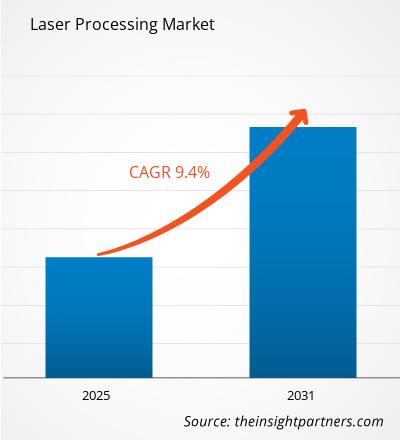
- 获取 激光加工市场 主要参与者概述
激光加工市场新闻及最新发展
激光加工市场的评估是通过收集一手和二手资料后进行的定性和定量数据进行的,这些数据包括重要的企业出版物、协会数据和数据库。以下列出了激光加工市场的一些发展:
- 全球领先的光子学公司相干公司 (Coherent Corp.)(纽约证券交易所代码:COHR)宣布,其业界领先的 PowerMax 传感器产品组合新增两项创新:PM15K+ 高功率激光传感器和适用于 PM10K+ 的全新背散射屏蔽选件。这些全新解决方案满足了工业环境中对高功率激光系统日益增长的精确、高效和安全测量需求。
(来源:相干公司,新闻稿,2025 年 6 月)
- 通快公司开发了 TruMicro 9010,这是一款输出功率为 1 千瓦的新型超短脉冲激光器(USP 激光器)。USP 激光器的超高功率输出使其在加工大型表面方面尤为出色。与许多其他 USP 激光器不同,TruMicro 9010 也适用于加工更大的部件。该激光器的高功率使工业客户能够以高生产率加工大型表面。即使在对生产率要求极高的卷对卷工艺中,用户也可以使用 TruMicro 9010 在平面材料上进行轮廓切割,”通快公司负责新款 USP 激光器的产品经理 Steffen Rübling 说道。这家高科技公司将在慕尼黑举行的世界领先的激光与光电子世界博览会上展示 TruMicro 9010。
(来源:通快公司,新闻稿,2025 年 6 月)
激光加工市场报告覆盖范围和交付成果
《激光加工市场规模及预测(2021-2031)》对以下领域进行了详细的市场分析:
- 涵盖范围内所有关键细分市场的全球、区域和国家/地区激光加工市场规模及预测
- 激光加工市场趋势,以及市场动态,例如驱动因素、限制因素和关键机遇
- 详细的 PEST 和 SWOT 分析
- 激光加工市场分析,涵盖关键市场趋势、区域框架、主要参与者、法规和最新市场发展
- 行业格局和竞争分析,涵盖市场集中度、热图分析、知名参与者和激光加工市场的最新发展
- 详细的公司简介
- 历史分析(2 年)、基准年、预测(7 年)及复合年增长率
- PEST和SWOT分析
- 市场规模、价值/数量 - 全球、区域、国家
- 行业和竞争格局
- Excel 数据集
近期报告
相关报告
客户评价
购买理由
- 明智的决策
- 了解市场动态
- 竞争分析
- 客户洞察
- 市场预测
- 风险规避
- 战略规划
- 投资论证
- 识别新兴市场
- 优化营销策略
- 提升运营效率
- 顺应监管趋势












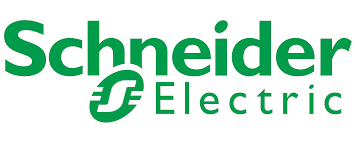


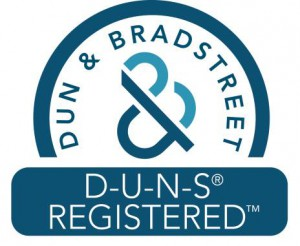
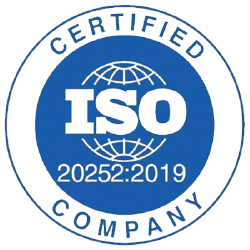





 获取免费样品 - 激光加工市场
获取免费样品 - 激光加工市场